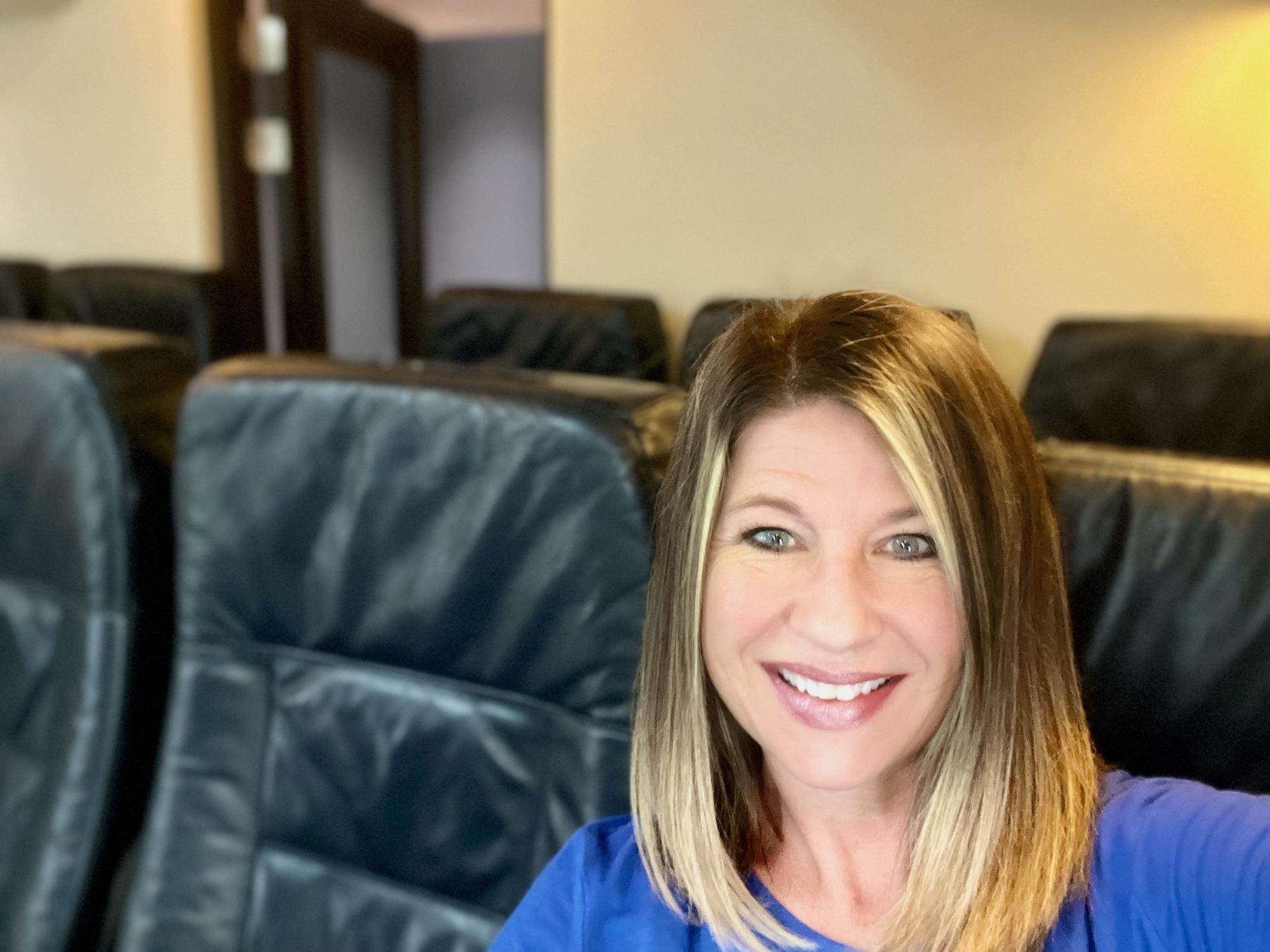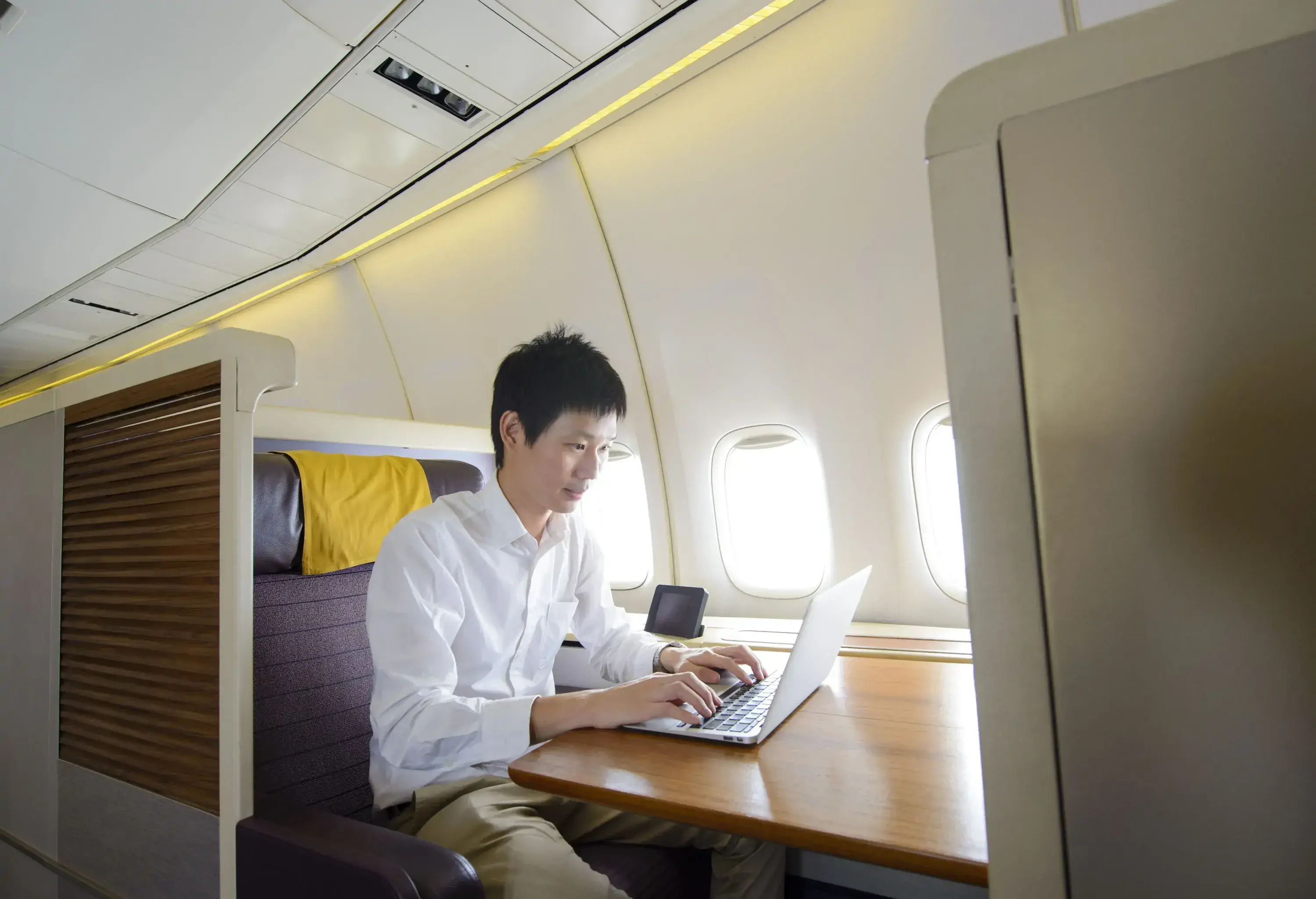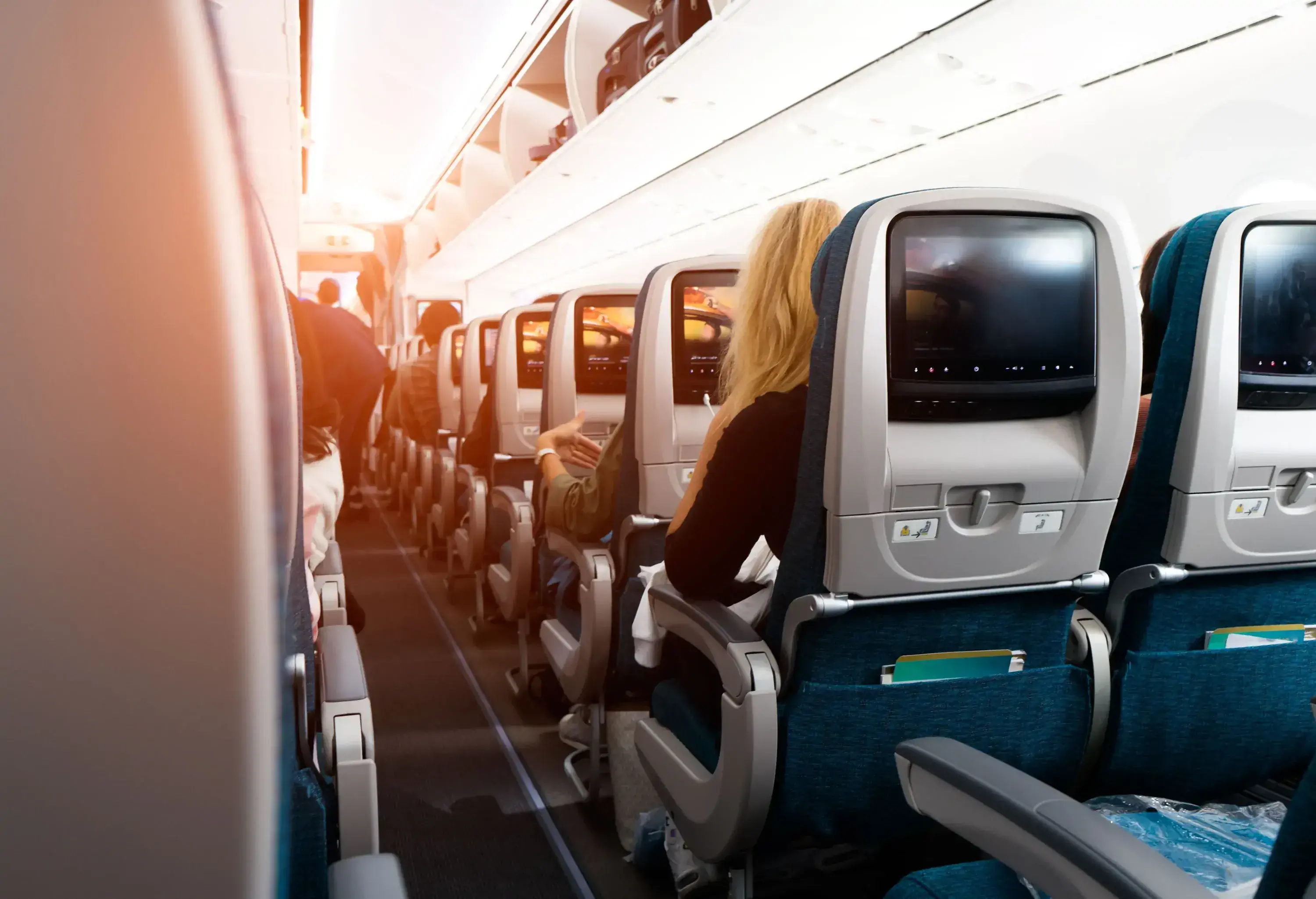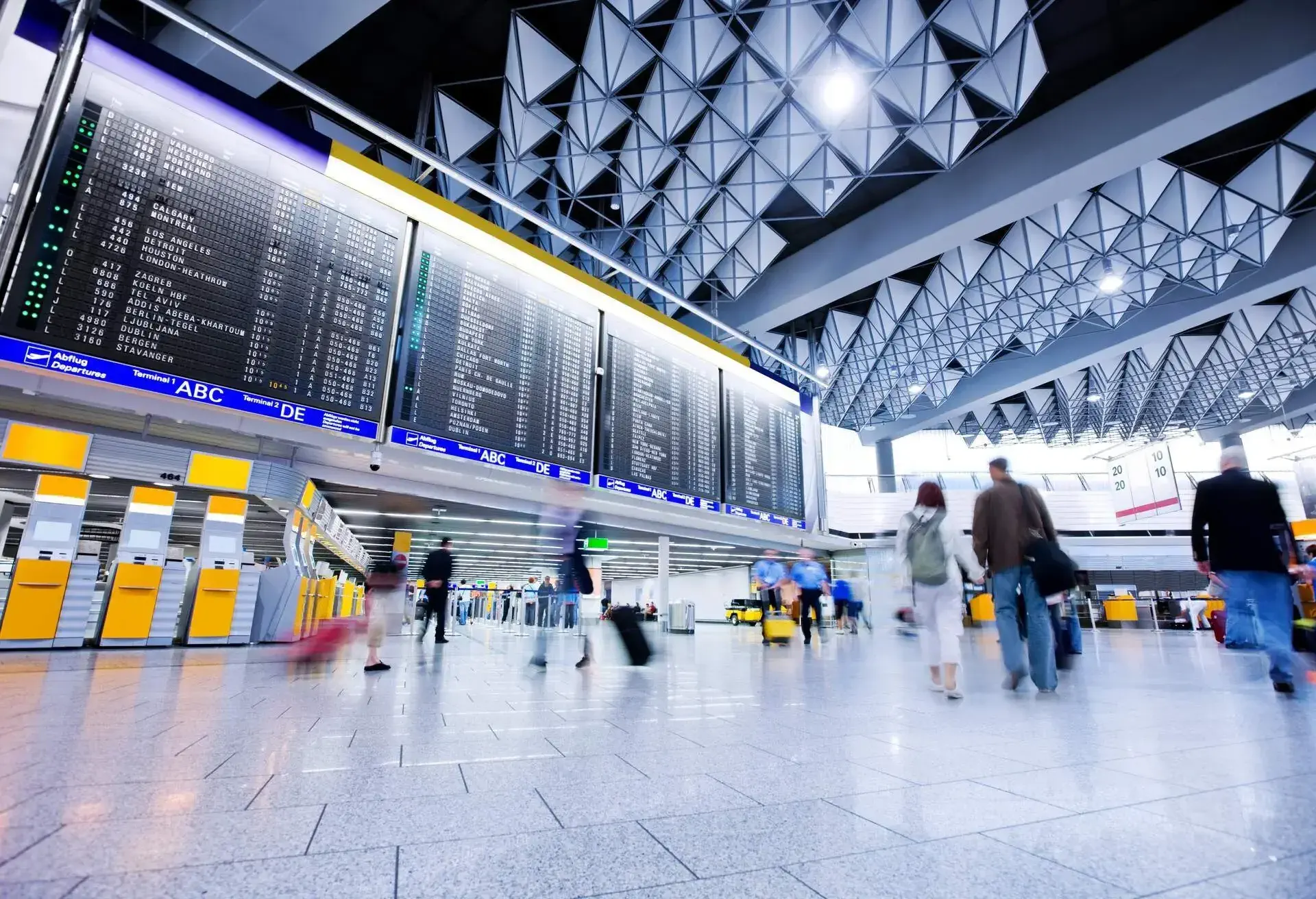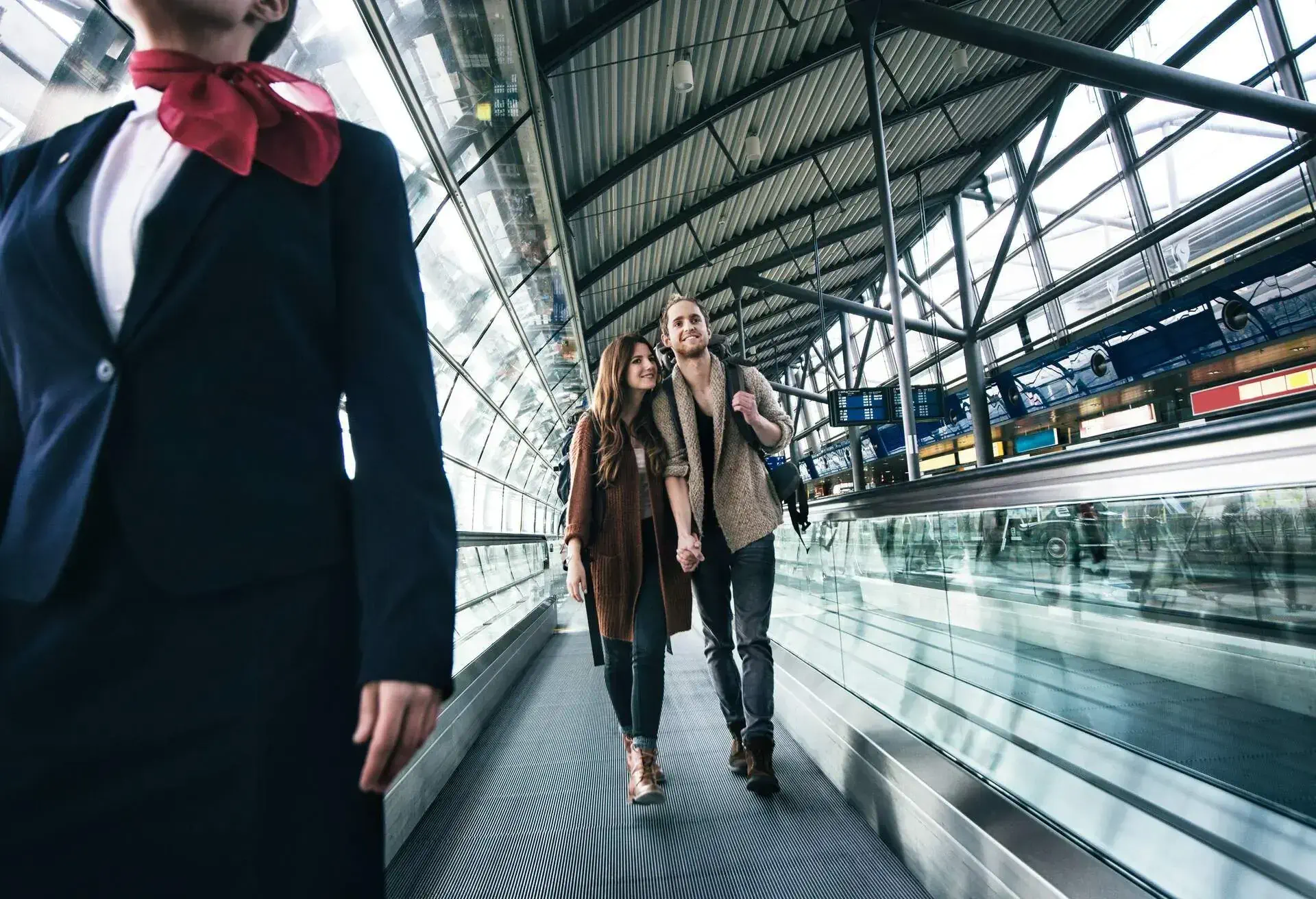Where you sit on a plane can have a big impact on your travel experience. That’s why understanding the difference between flight classes is important before you book your ticket.
You’ll need to take several factors into consideration: budget, flight length, and whether you’re travelling solo or with family or friends. And with several new airline fare classes available today – Premium Economy, we’re looking at you! – there are more options than ever. Here’s what to know about airplane seating classes.
1. What are airline cabin classes?
Business and First class cabins are sometimes grouped together when referring to premium class travel. This not only refers to a specific fare class and cabin for many airlines, but can also have a broader meaning: the higher-priced seats at the front of the plane.
And more travelers than ever are willing to pay for those perks. According to a report from the International Air Transport Association (IATA), Business and First Class travel grew by 11.8% in 2024.
Depending on the size of the airline or aircraft or duration of the flight, there may only be one cabin available –economy. But economy cabins can vary widely across airlines, especially when comparing major carriers with budget airlines. For example, Economy Class on Singapore Airlines is all but guaranteed to be a notably more luxurious experience than its counterpart on a low-cost carrier.
2. What are the differences between flight classes?
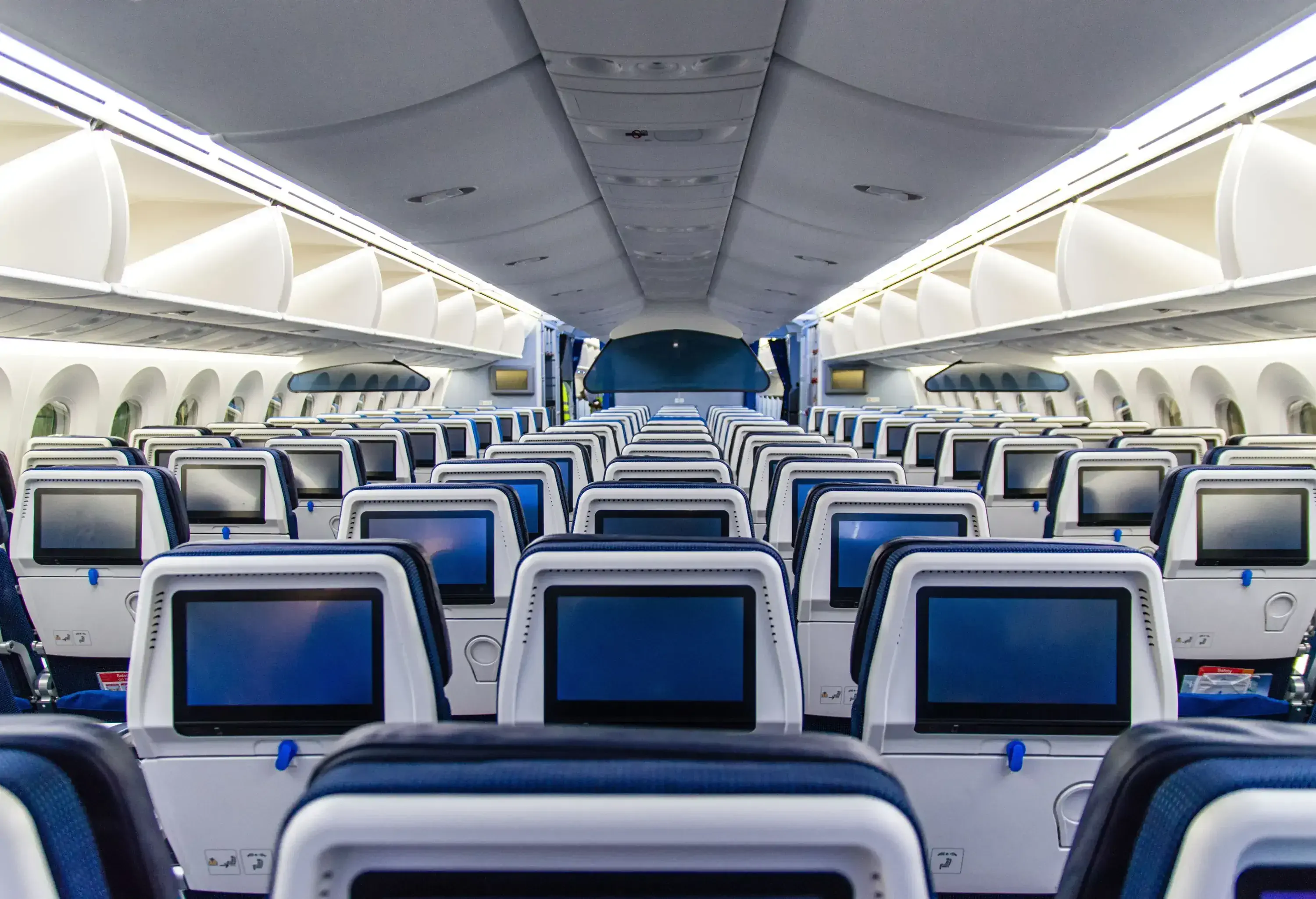
While most major carriers now offer four main cabin classes for long-haul flights, not all do, so it’s always worth doing your homework before booking.
And while some airlines may have fleets that feature similar products, there are certain differentiators in both the hard and soft product – such as the tray table, for example, or the service – that can vary significantly from carrier to carrier, as well as within an airline’s own fleet.
For example, older aircraft may not be retrofitted with a newly rolled-out Business Class product, a realisation that can come as a disappointment for unsuspecting travellers upon boarding.
Look at the seating map for both the airline and aircraft type you’re flying – doing some research ahead of time really pays off when it comes to picking the cabin that best fits your budget and expectations.
To help you compare at a glance, here’s how the four main cabin classes usually differ across airlines:
| Feature | Economy | Premium Economy | Business Class | First Class |
|---|---|---|---|---|
| Seat type | Narrow seats, limited recline (2–3 inches), last to board | Wider seats, more recline, often near front of plane | Lie-flat or angled flat seats, direct aisle access, and sliding privacy door on many airlines | Fully lie-flat beds or private suites; some with showers |
| Space | 28–32” pitch, limited legroom, often no early seat selection | 34–38” pitch, partitioned cabin on long-haul, amenity kit usually provided on long haul | 55–78” pitch, much wider seats, extra privacy | Largest seats, full suites on some carriers, hotel-like comfort |
| Meals | Varies: buy-on-board for budget; complimentary snacks and meals on many international routes | Upgraded meals, complimentary beverages | Multicourse dining, welcome drink on boarding, extensive drink selection | Restaurant-quality dining, celebrity chef-designed menus, premium wines and liquor |
| Baggage | Carry-on + personal item; checked bags often extra on domestic; sometimes free internationally | 1–2 checked bags usually included; priority baggage | 2 checked bags standard, priority handling | 2–3 checked bags, top priority handling |
| Lounge access | Not included (unless via status or paid) | Rare, but available on select airlines (e.g., JAL) | Standard with ticket, global network of lounges | Exclusive lounges, private check-in areas, spa/bedrooms at hubs |
| Boarding and check-in | Last to board; limited check-in flexibility | Priority boarding and check-in | Priority check-in, expedited security, priority baggage | Dedicated check-in line, fastest boarding, minimal wait time |
| Extras | In-flight entertainment and Wi-Fi vary by airline; seat choice often paid | Amenity kits (socks, eyeshades, toothbrush), usually blanket and pillow | Luxury bedding, duvets, loungewear, wider IFE selection | Luxury amenity kits, premium brand toiletries, showers, private attendants |
Economy.
Economy seats are the no-frills option and a good fit for budget-conscious travellers or those who don’t need luxury perks. Also known as standard or main cabin seats (and, previously, coach), this is the most affordable flight class. Seats in economy are narrower than in other cabins, with less legroom.
What’s included in an economy ticket can vary significantly between carriers. On some, it doesn’t come with any extras, and food, Wi-Fi and luggage may need to be purchased separately. Others might include complimentary perks like snacks, drinks and in-flight entertainment.
What’s included for free with an economy ticket can also depend on flight duration or destination. For example, economy on a long-haul international flight with a major carrier usually includes one checked bag and complimentary alcoholic drinks onboard. On domestic flights, though, those extras usually come at a cost.
Premium Economy.
Premium economy offers a notable upgrade over standard economy seats without pushing the ticket price too high, making it a great option for frequent travellers looking for a bit more comfort. Main perks include wider seats and more legroom, though at a much lower price than business or first class. Premium economy may be separated from other seats by a partition and is often located in a more desirable part of the plane, such as near the front.
On domestic flights, the “premium” element usually just means this cabin offers better seats on the aircraft. On some international flights, though, premium economy may include added perks like better food, a higher baggage allowance and free amenity kits.
Business Class.
Travellers looking for a luxurious option but who don’t want to stump up for first class often go for business. Business is a definite step up from economy, offering more comfortable seats that are wider and can recline or even lie flat, full or multi-course meals (sometimes served on real china rather than disposable trays) and personal bar service. Naturally, offerings vary between airlines, so it’s worth checking what each one includes before booking.
Lounge access is another solid perk that comes with buying a business class ticket, especially if you’re making a stopover on a long-haul journey.
First Class.
It doesn’t get any better than first class, the crème de la crème of the onboard experience. This is the most luxurious option available for commercial flying, and ticket prices reflect that. That said, not all airlines offer a true first class experience. Some have scrapped it altogether in favour of enhanced business cabins that rival first class, but at a slightly lower price point.
Passengers in this coveted cabin start enjoying the perks before they even board, with access to dedicated check-in lines and exclusive lounges. First class passengers also board first. While offerings vary widely between airlines, you can typically expect fully flat beds, multi-course meals curated by celebrity chefs with wine pairings, top-tier service and added privacy features like sliding doors and noise-cancelling headphones.
More and more, first class cabins look and feel like mini apartments in the sky, with fully flat beds, separate sitting areas, showers and loungewear. Emirates, Etihad and Singapore Airlines are just a few carriers that have taken their already impressive first class experiences up a notch with ultra-premium suites that make flying truly luxurious.
3. How much does each flight class cost? A breakdown by cabin type.
From legroom to lie-flat seats, cabin class comes at a cost. We looked at flight searches across KAYAK to see how prices compare between economy, premium economy, business and first class, so you know what you’re paying for when you upgrade.
If you’re flying internationally, economy remains the most budget-friendly choice at £519 on average. Premium seats come in at around £1,341, offering extra comfort for a moderate step up in price. Business class takes a bigger leap to £2,561, while first class comes in at a luxe £6,598. The higher the cabin, the more you’ll pay, but the extras often make it worth it.
The data insights are based on the analysis of searches made on KAYAK.co.uk and associated brands, between 2025-01-01 and 2025-07-24 for traveling between 2025-01-01 and 2025-12-31.
4. What are airline fare classes and what do they mean?
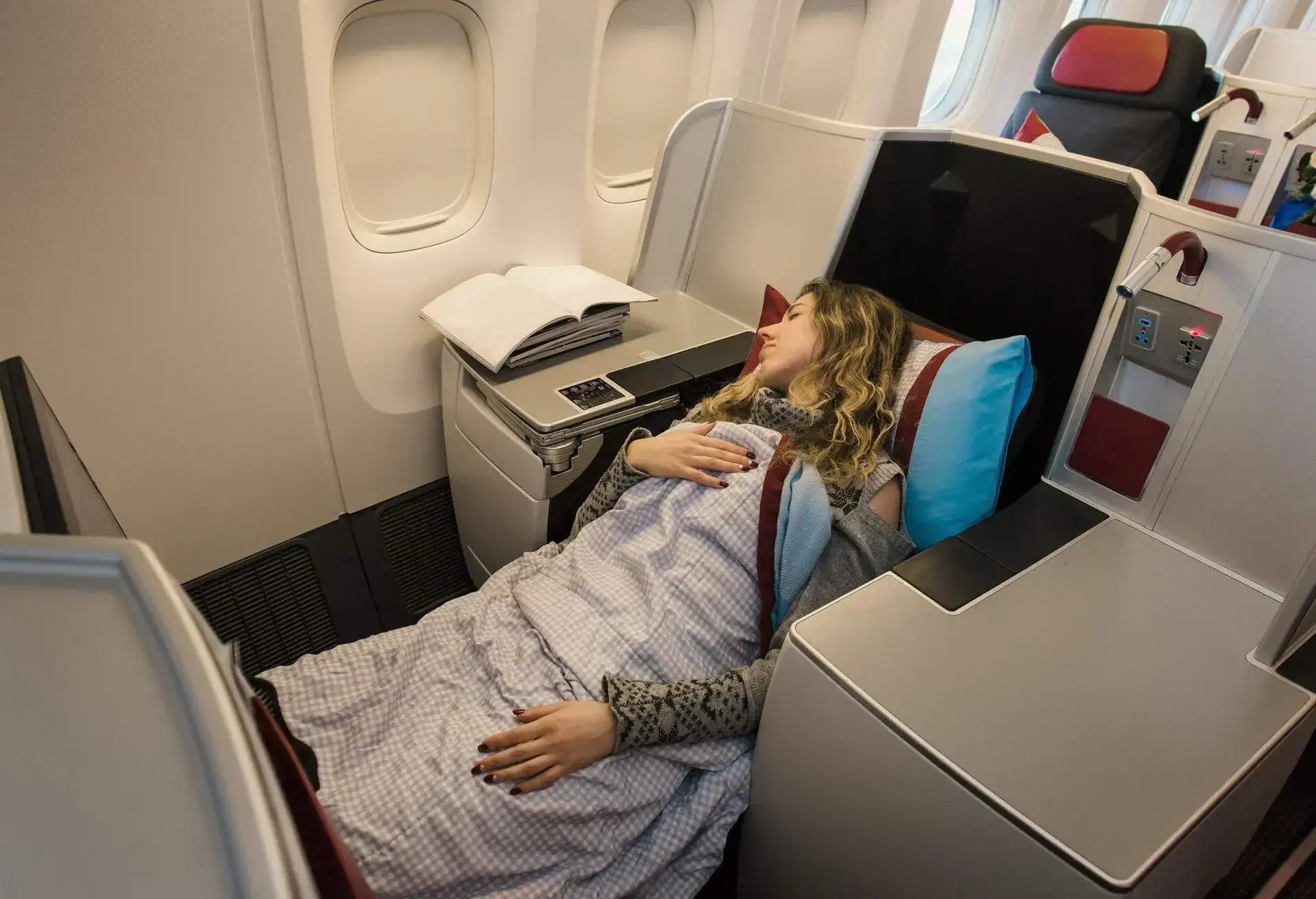
Also known as booking codes or booking classes, fare classes are how airlines categorise every seat on a plane. Each fare class comes with a different price and set of rules. Airlines use fare classes to help control inventory and determine how many tickets can be sold at a particular price.
However, it’s important to understand the difference between cabin class – Economy, Premium Economy, Business and First – and the fare class or booking code, which refers to the one-letter code within a cabin that determines price, flexibility, and perks.
What is the fare basis code?
The fare basis code – a series of 1–8 alphanumeric characters, including the one-letter codes discussed below – holds key information: the price of your ticket, how many air miles you’ll earn for the flight and how flexible your ticket is if you need to make changes. Fare basis codes also affect the following:
- Possibility of a refund
- Penalties for cancellations or changes
- Advance purchase requirements
- Seasonal pricing rules
- Upgrade eligibility
Within that larger code, fare classes are identified by one-letter codes – you’ve probably seen them on your boarding pass without realising what they mean (we have too). Fare codes vary by airline, and a specific cabin doesn’t always correspond to a single fare class. Within cabin classes, there can be multiple fare classes, for example: Y, M, K and L in Economy.
That said, there are some general rules of thumb. The first letter in the fare basis code usually represents the following fare classes:
- Y: Full-fare Economy class ticket
- W: Full-fare Premium Economy class ticket
- J: Full-fare Business class ticket
- F: Full-fare First class ticket
Are booking codes standardised across airlines?
Not always. Different carriers may use slightly different booking codes, which is worth keeping in mind. While Y, J and F are fairly consistent, codes like W for Premium Economy can vary across airlines. For example, some carriers use P or E instead.
As a result, you can’t directly compare booking codes across airlines.
How booking codes affect upgrades and mileage earning.
Some discounted fares, such as Basic Economy tickets, may earn reduced, or even zero-miles. In addition, certain fare classes aren’t eligible for upgrades, even if seats in a higher cabin are available. Again, this is where a bit of research can help you avoid unpleasant surprises later.
4. Tips on choosing the best class and fare.
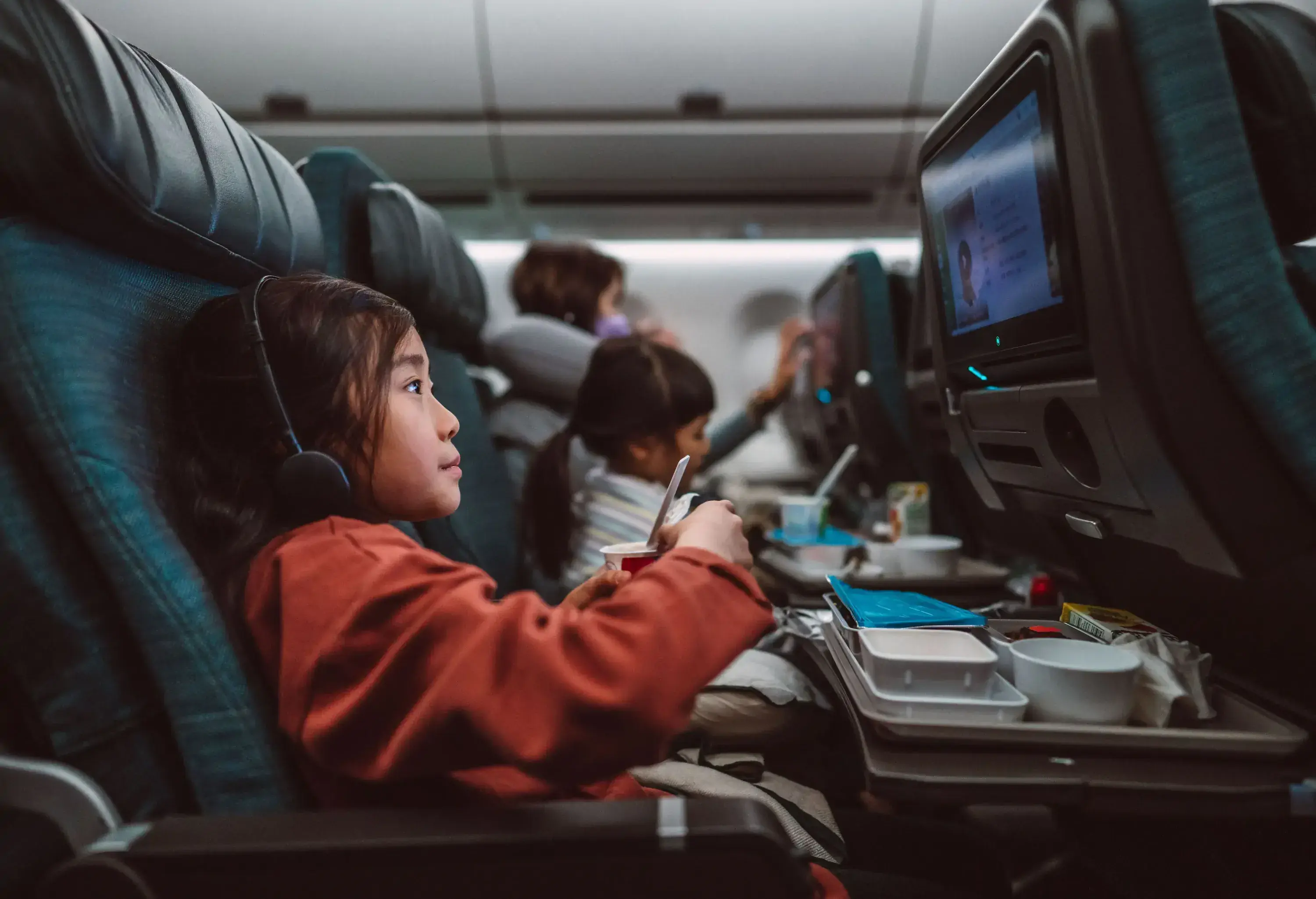
Once you’ve figured out your budget and whether you want to use frequent-flyer points, you can start comparing fares and cabin classes.
Here are a few tips and tricks to make sure you’re getting the most out of your next flight booking:
- Generally, the cheaper the fare class, the more restrictions it comes with.
- Even with a few general rules, fare classes and booking codes can vary between airlines. So check with the airline directly and compare flight classes to make sure you’re getting the best deal for your booking.
- It’s important to know which fare class you’ve booked, as that will help you understand how it affects your experience. For example, some fare classes don’t allow upgrades or may earn you more points than others. When it comes to airline deals and restrictions, knowledge is power.
FAQ: Flight classes explained.
Tough to say. If you can afford it, why not? But for us mere mortals, it’s generally not worth the splurge. That said, if you’ve got a long layover or plan to spend extended time in the airport, lounge access might tip the scales.
Premium Economy is a noticeable step up from standard Economy – with wider seats, upgraded meals and a generally more comfortable cabin experience. Economy seats, on the other hand, don’t usually include many extras.
The jump from Business to First Class – if it’s available on your flight – can come with some next‑level perks: private suites, restaurant‑quality meals and, sometimes, even a chauffeured ride to the aircraft.
If your budget stretches that far, go for it. But in our opinion, Business Class on most airlines already feels exclusive enough.
There’s a bit of wizardry involved when it comes to how airlines hand out upgrades – so don’t expect to casually ask at check‑in and voilà, you’re off to First Class. Free upgrades aren’t as common as they used to be.
That said, most airlines prioritise – meaning loyal passengers (those who spend a lot) are more likely to land upgrades just by requesting them during booking or check‑in.
Not flying with status? You can usually still upgrade with cash, points or a voucher – but be aware that some discounted fares aren’t eligible.
Often, yes. Airlines tend to calculate mileage based on both the price paid and the cabin you’re in – so flying in a higher class typically means earning more miles. That said, loyalty programmes vary by airline, so always double‑check your carrier’s rules.
That said, most airlines prioritise – meaning loyal passengers (those who spend a lot) are more likely to land upgrades just by requesting them during booking or check‑in.



